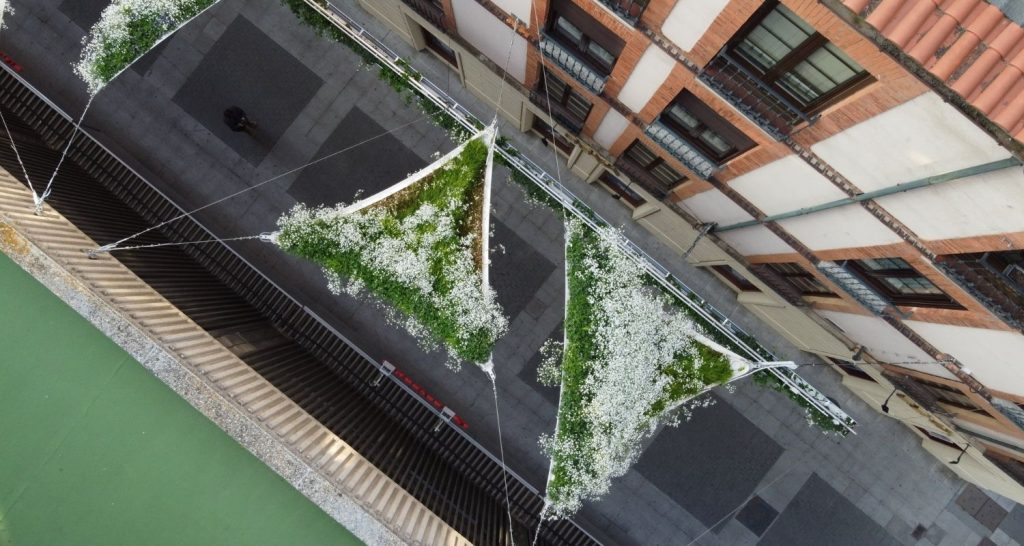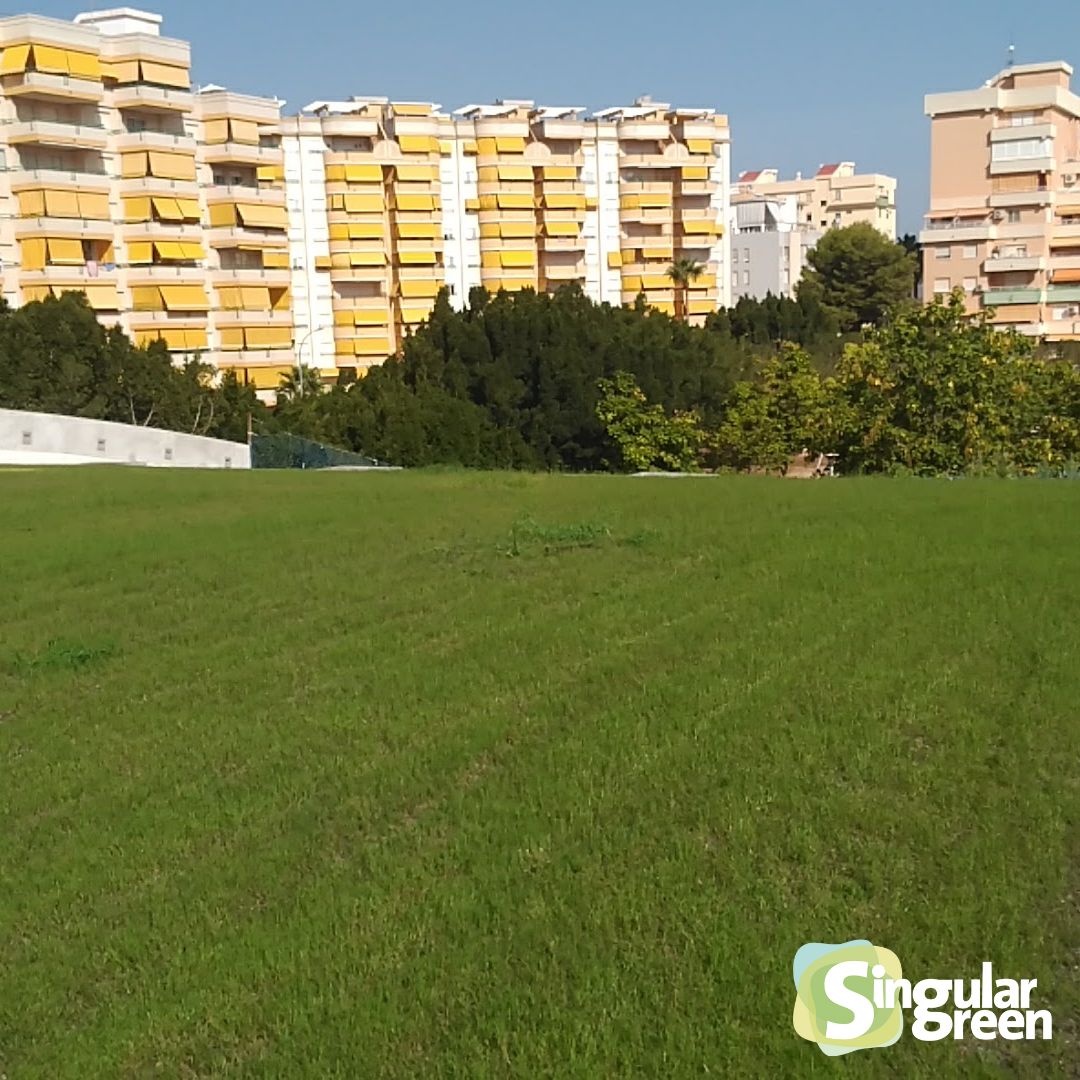In recent years, the demand for sustainable and eco-friendly solutions has increased considerably, and natural awnings have become a popular alternative for providing shade and protection in outdoor spaces.
These awnings, made from materials such as bamboo and esparto grass, not only offer aesthetic benefits, but also contribute to the conservation of the environment.
In this article, we will explore in depth the different types of natural awnings, their advantages, and how vegetated sails are positioned as an innovative intermediate solution.
History and Evolution of Natural Awnings
The use of natural materials for the construction of awnings has a long history. Since the earliest civilisations, man has sought to protect himself from sun and rain using available natural resources. Over time, techniques and materials have evolved, leading to more efficient and aesthetic solutions. Today, natural awnings are not only used in rural environments, but also in cities that seek to integrate nature into their urban architecture.
Ecological Benefits of Natural Awnings
Natural awnings offer a number of ecological benefits that make them an attractive option for those looking to live more sustainably. These benefits include:
- Reduced Carbon Footprint: By using renewable and biodegradable materials, natural awnings help reduce reliance on plastic and synthetic products.
- Biodiversity Enhancement: The installation of natural awnings can create microhabitats for birds and insects, contributing to local biodiversity.
- Energy Efficiency: Natural awnings provide shade, reducing the need for air conditioning and helping to keep indoor spaces cool.
Materials used in Natural Awnings
Natural awnings are made from a variety of materials, each with its own advantages and characteristics. Below, we explore two of the most common:
- Bamboo: Known for its strength and durability, bamboo is a popular material for awnings. In addition, its rapid growth makes it a sustainable option.
- Esparto: This traditional material is used in the manufacture of handcrafted awnings. It is highly resistant and offers a rustic and natural look.
Introduction to Vegetated Sails: An Intermediate Step between Normal and Natural Awnings
Vegetated sails represent an innovation in the field of shade solutions.
They are positioning themselves as an alternative between traditional and natural awnings, combining the best of both worlds. These structures not only provide shade, but also integrate vegetation, creating a cooler and more pleasant microclimate.
Advantages of Greenery in Urban Environments
Greenery sails offer multiple benefits, especially in urban environments where space for vegetation is limited. Some of the advantages include:
- Natural Cooling: Vegetation helps to reduce ambient temperatures, creating cooler spaces.
- Pollutant Absorption: Plants in vegetated sails can absorb pollutant gases, improving air quality.
- Enhanced Aesthetics: These structures bring a natural and attractive touch to urban areas, revitalising streets and squares.
Success Stories: Valladolid Vegetated Sails Project
An outstanding example of the implementation of vegetated sails is the project in Valladolid, Spain.
This project has demonstrated the potential of these structures to transform urban spaces, providing not only shade, but also aesthetic and environmental improvement. The project has made it possible to bring nature to areas where it was previously impossible, improving both the environment and the quality of life of the inhabitants.
Pros and Cons of Canopies and Shade Sails
It is important to consider both the pros and cons of these solutions to make an informed decision:
Natural Awnings:
- Pros:
- Sustainable and biodegradable materials.
- Aesthetically pleasing and in harmony with the natural environment.
- Energy efficient by providing shade.
- Cons:
- Require regular maintenance.
- Can be less durable than synthetic awnings.
- Limitations in terms of resistance to extreme weather conditions.
Vegetated sails:
- Pros:
- Natural cooling and improved air quality.
- Visual attractiveness and revitalisation of urban spaces.
- Possibility of integration of urban infrastructures.
- Cons:
- Require more intensive maintenance, including plant care.
- Higher initial costs.
- Need careful design to ensure effectiveness.
How Natural Canopies and Greensails Improve Urban Biodiversity
The installation of vegetated canopies can have a significant positive impact on urban biodiversity. These structures create microhabitats that can be used by diverse species of flora and fauna, promoting a healthier and more balanced ecosystem within cities.

Integration of Urban Infrastructures with Natural Canopies and Green Sails
One of the greatest advantages of vegetated sails is their ability to integrate urban infrastructures in a harmonious way. By concentrating cables and pipes in vegetated structures, the aesthetics of the streets are improved and the maintenance of these infrastructures is facilitated.How to Choose the Best Natural Canopy or Greenery for Your Space
When choosing a natural canopy or vegetated sail, it is important to consider several factors, including:
- The local climate,
- The space available, and
- Specific shade and protection needs.
- Evaluating the different options and consulting with experts can help you make the best decision.
Maintenance and Care of Canopies and Shade Sails
Both natural canopies and vegetated sails require proper maintenance to ensure their durability and effectiveness.
This includes regular cleaning, inspection for damage, and in the case of vegetated sails, care of the plants that are part of the structure.
Future of Natural Awnings and Greenery in Urban Architecture
The future of awnings and sails is promising. As cities seek sustainable solutions to improve the quality of life of their inhabitants, these structures will play an increasingly important role in urban architecture.
The combination of aesthetics, functionality and ecological benefits positions them as an ideal option for the future.







